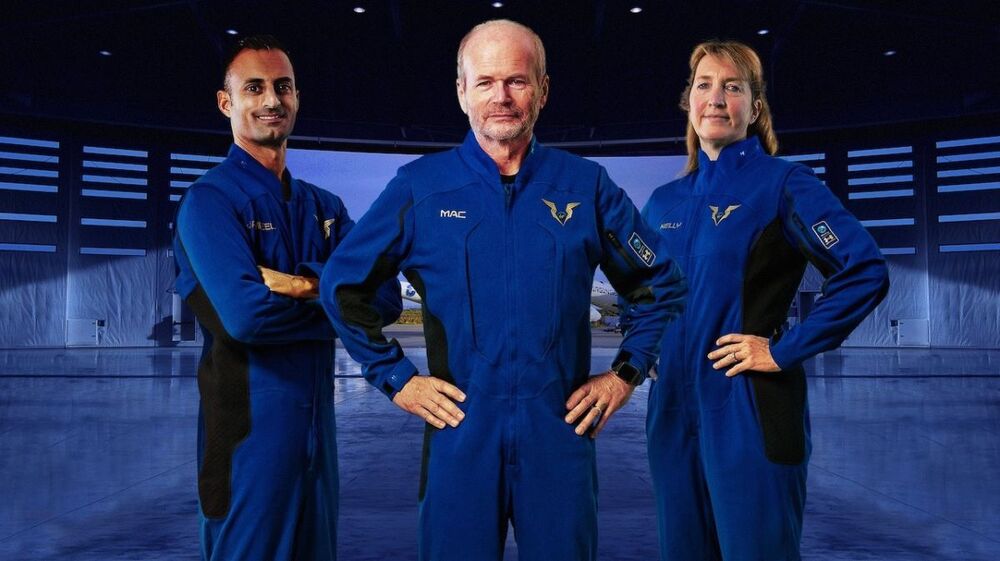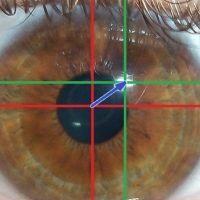Blue is the dominant color, as with the suits that Virgin Galactic passengers will wear.
The pilots and passengers who fly on Virgin Galactic’s SpaceShipTwo vehicle will be nicely color coordinated.

Brain Muraresku, author of “The Immortality Key — The Secret History Of The Religion With No Name”, discussing his fascinating journey to discover psychedelic potions from antiquity, reconstruct their history in the development of religion and civilization, and their development into a modern neuro-pharmacopoeia.
On today’s show we are going to be weaving together a really interesting range of themes including psychedelics, pharmacognosy and medicinal botany, history, religion & spirituality, end of life care, dreaming, mental health and a whole lot more.
Brian Muraresku is the author of “The Immortality Key: The Secret History of the Religion with No Name”.
Brian graduated Phi Beta Kappa from Brown University with a degree in Latin, Greek and Sanskrit. As an alumnus of Georgetown Law and a member of the New York Bar, he has been practicing law internationally for fifteen years.
He is also founding executive director of Doctors for Cannabis Regulation. Their work has been featured on CNN and ESPN, as well as The Washington Post and San Francisco Chronicle. In arbitration with the NFL in 2018, Mr. Muraresku represented the first professional athlete in the United States to seek a therapeutic use exemption for cannabis.

Steve Wozniak is starting a second company, 45 years after he co-founded Apple in Steve Jobs’ parents garage in 1976.
This time, Wozniak is starting a business in the green tech and blockchain space called Efforce, according to a statement released Friday.
Efforce, which has been in stealth mode for almost a year, is a marketplace for corporate or industrial buildering owners to have “green” projects funded.

Ever wonder what happens when you wring out a washcloth in SPACE?! 🌌 👨🚀 💧 via Canadian Space Agency & NASA — National Aeronautics and Space Administration.

Under the streets of south London, in a disused bomb shelter and tube tunnel, is a farm. Growers are producing fresh vegetables and herbs in a fraction of the time it takes a conventional farm https://econ.st/3mGeeW7


It’s only the second time pristine astroid material has been brought back to Earth.
A Japanese space capsule carrying asteroid samples landed in a remote area of Australia as planned Saturday, Japan’s space agency, JAXA, said.
Why it matters via Axios’ Miriam Kramer: It’s only the second time pristine asteroid material has been brought back to Earth. Sample return missions like this one are incredibly valuable to scientists.

This article was published as a part of the Data Science Blogathon.
Introduction
Hi, In this article, let us go over how you can create a Python program using Convolutional Neural Networks (Deep Learning) and a mouse/keyboard automation library called pyautogui to move your mouse/cursor with your head pose. We will be using pyautogui as it is the simplest available Python library to programmatically control the various components of your computer. More details on how to use this library mentioned below.

Now that EAST has switched on for what its makers say is the real deal, the project has a lot to prove. It costs a huge amount of energy input to bring a tokamak reactor’s entire assembly up to speed. If a fusion reactor can’t easily outpace that input, it will never produce power, let alone the dream of virtually limitless power that fusion proponents have sold for decades.
China has switched on its record-setting “artificial sun” tokamak, state media reported today. This begins a timeline China hopes will be similar to the one planned by the global International Thermonuclear Experimental Reactor (ITER) project.
☢️ You love nuclear. So do we. Let’s nerd out over nuclear together.
